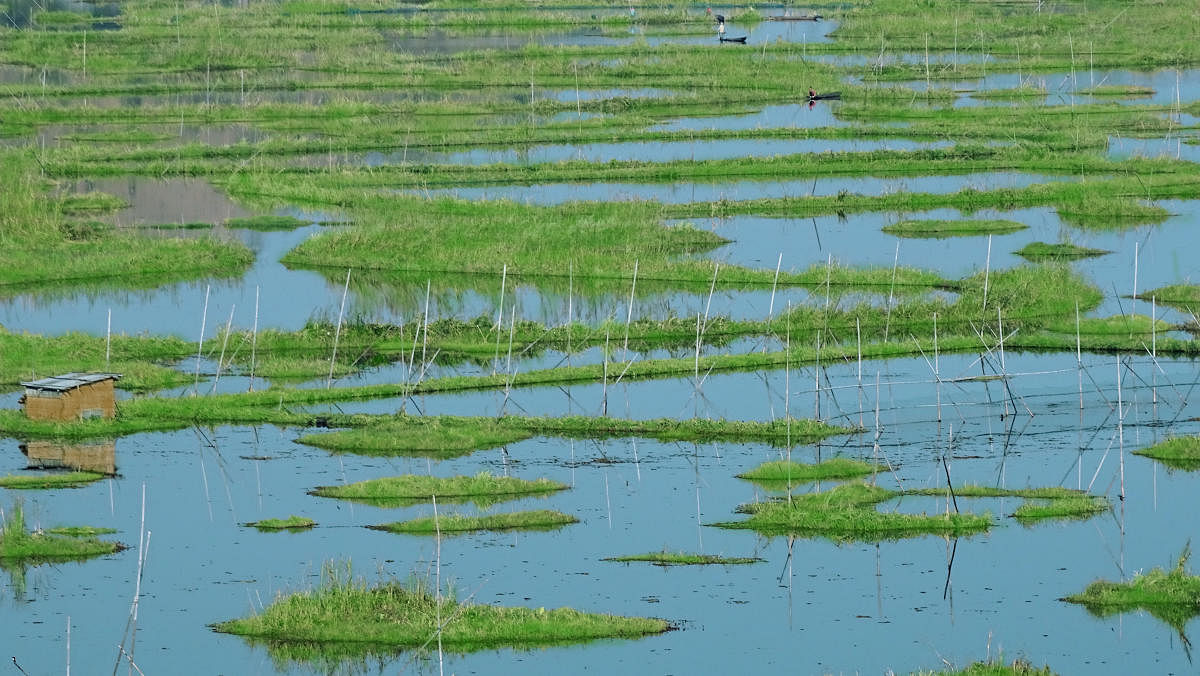
The advantages of lakes are many: they provide water for drinking, irrigation and industries, produce edible fish, recharge the groundwater, support recreation activities like swimming and boating, provide habitat for birds and keep the region around the lake cool, among others.
Let us imagine the time when Bengaluru was a village. There were hundreds of lakes in and around (as per records there were around 900), created by Kempe Gowdas, Wodeyars of the Mysore Kingdom and the British, all in pristine condition.
When Bengaluru began to grow from village to a town, town to city and city to megacity, sadly, a large number of lakes vanished (presently the number of lakes is around 180) and their place was taken by structures like markets (Siddhikatte tank —City market), bus stations (Dharmambudhi tank —Kempegowda Bus Stand, Majestic) and housing layouts (Domlur lake, Marenahalli lake).
The growth of the city resulted in the production of large volumes of sewage. Unfortunately, our civic authorities did not have the vision to treat them before letting them into the environment.
The result is there for everyone to see —Bellandur, Varthur and almost all lakes of Bengaluru are in the news for wrong reasons —dead fish, fire and froth on the lake surface and obnoxious stench, among others.
In unpolluted lakes, the concentration of nutrients in water, essential for the algal growth, especially of phosphorus and nitrogen, will be low and they limit the growth of algae.
Due to urbanisation and release of untreated sewage into the lakes, the level of phosphorus and nitrogen begin to increase in lake water and lakes begin to get polluted.
This process is referred to as ‘Cultural Eutrophication’. Several physicals, chemical and biological structural changes occur during this transition from clean water to polluted lakes.
These include: 1) The increase in the concentration phosphorus and nitrogen triggers the algal multiplication. The density of easy to digest algae for fish and other aquatic fauna are gradually replaced by hardy and difficult to digest blue-green algae. These hardy algae develop into massive scums, produce obnoxious stench and some varieties produce toxins that are harmful to humans and animals.
2) Colourless water gradually changes to light green and then to dark green
3) Clean water harbours a variety of native fish whereas polluted water hosts a few hardy varieties of fish, mostly exotic, and thus overall biodiversity decreases.
4) In clean water lakes, the production of organic matter will be low and the decomposition activity by the bacteria is more than sufficient to decompose organic matter and the lake ecosystem will be healthy and in ‘Self-purification’ mode. In polluted lakes, there will be a match between organic matter production and its decomposition resulting in its accumulation as sediment at the lake bottom.
5) In polluted lakes, due to decomposition and respiration activities, dissolved oxygen goes down to low to nil level during nights. In summer this may cause mass fish kills.
The continuous inflow of raw sewage enriches the lake with so much of nutrients that the habitat triggers rapid growth of hardy floating plants like violet flower-bearing Eichornia which may choke the water surface.
Because of massive accumulation of organic matter at lake bottom and they’re high anaerobic (without oxygen) decomposition activity, methane and hydrogen sulphide production occurs and when methane, the highly inflammable gas, comes in contact with air, even a minor spark ignites them and we may see lake surface burning.
Detergents mixed sewage causes massive frothing at the lake surface. This froth, when carried by the wind, may block the view of motorists and cause serious accidents.
Bellandur and Varthur lakes are frequently in the news for such incidences. The intermediate space between floating weeds at lake surface offers an excellent environment for mosquitoes to breed and explode and disease outbreak becomes common. The life for people living in the vicinity of lakes becomes one hell.
There are umpteen examples all over the world where polluted lakes and rivers have been restored to original pristine conditions like Lake Washington in Seattle, USA and Thames river in London, UK.
Necessary steps
To bring back the lakes to original glory, a number of measures are necessary. They are:
1. Complete diversion of sewage entering the lake; 2. Removal of the organic-rich sediment by desilting; 3. Setting up of Sewage Treatment Plants (STP) to treat water to tertiary level (so that the nutrients, in particular phosphorus, are removed) and only then letting to the environment or recycled; 4. Periodic removal of floating plants that are sinks for nutrients; 5. Use of phosphate-free detergents; 6. Construction of public toilets so that people do not use lakeshore for defecation; 7. Post guards and install CCTVs at all lakes to prevent land sharks encroaching lake area and to prevent dumping of construction debris and garbage; 8. Complete ban on immersion of idols during festivities and 9. Conduct awareness programmes on the environment, especially to school children regularly.]
Although a host of agencies like BBMP, BDA, Lake Development Authority, among others are working to restore and preserve the lakes and huge amounts have been spent (around Rs 200 crore), unfortunately, the status of lakes has not improved much because of the half-hearted and unscientific approach.
The work of the National Green Tribunal for protection and conservation of the environment and its strictures with respect to Bengaluru lakes is beginning to show the result.
Recently, under corporate social responsibility, many private companies like Infosys have accepted the responsibility to conserve lakes in Bengaluru city. Let us hope to see lakes of Bengaluru rejuvenated to earlier pristine conditions.
(The writer was Principal Scientist and Head, Research Centre of Central Inland Fisheries Research Institute, Bengaluru)